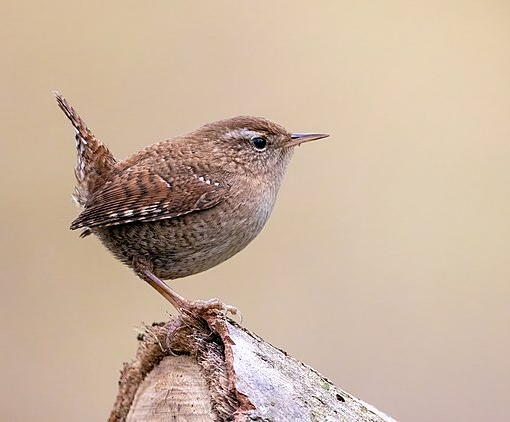To guide their migratory movements or return to a known destination, animals possess a series of compass mechanisms based on the vision of the sun, the stars, or the perception of the Earth’s magnetic field. Depending on their availability, they often help themselves in succession with more than one of these, as environmental conditions change (cloudy skies, magnetic anomalies).
The moon also has a compass function, but there are very few animal species in which its compass function has been demonstrated and these are mainly invertebrate species. Its function is yet to be discovered in vertebrates, and perhaps only in birds can its role in orientation be admitted.
But let’s proceed in order.
An all-Italian discovery
In the 1950s, two Tuscan researchers made an interesting discovery: small crustaceans from the seashores that venture onto the beaches in search of food, then return to the shoreline, their chosen environment, relying on a solar compass (Image 1). They have an innate knowledge of the direction of the beach and the sea, a direction that they select with the solar compass but, as it happens, they can also do it at night and, therefore, Leo Pardi and Floriano Papi were led to admit the existence of a compass based on the vision of the moon.
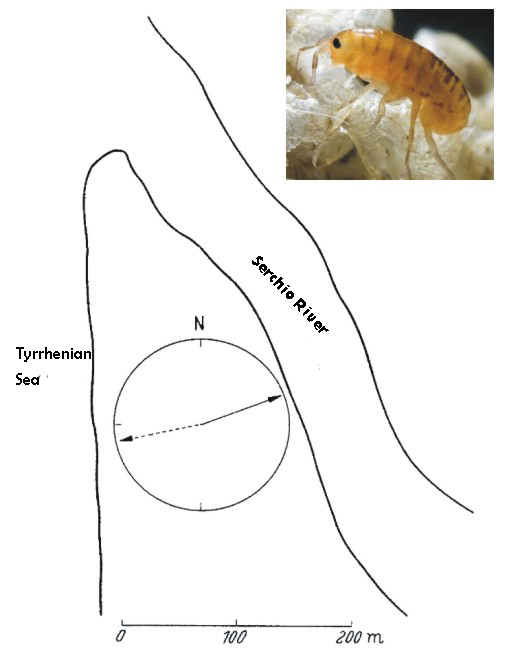
The discovery, for those interested in ethological studies, was of great importance, and here, on the Pisan coast, none other than Karl von Frisch (future Nobel Prize for ethology) arrived to attend their experiments (Image 2). They struggled to convince themselves that in a two-centimeter animal, two independent mechanisms of sense of time could coexist, one in phase with the 24-hour day-night cycle that regulates the solar clock and, respectively, a lunar clock that operates more slowly (24h 50 min), synchronized on other stimuli that were unknown at the time.
The moon during the lunar month, actually moves across the sky in a very different and complex way compared to how the sun does, with the result that it is visible only for a part of the lunar month and with diverse sizes and positions night after night.
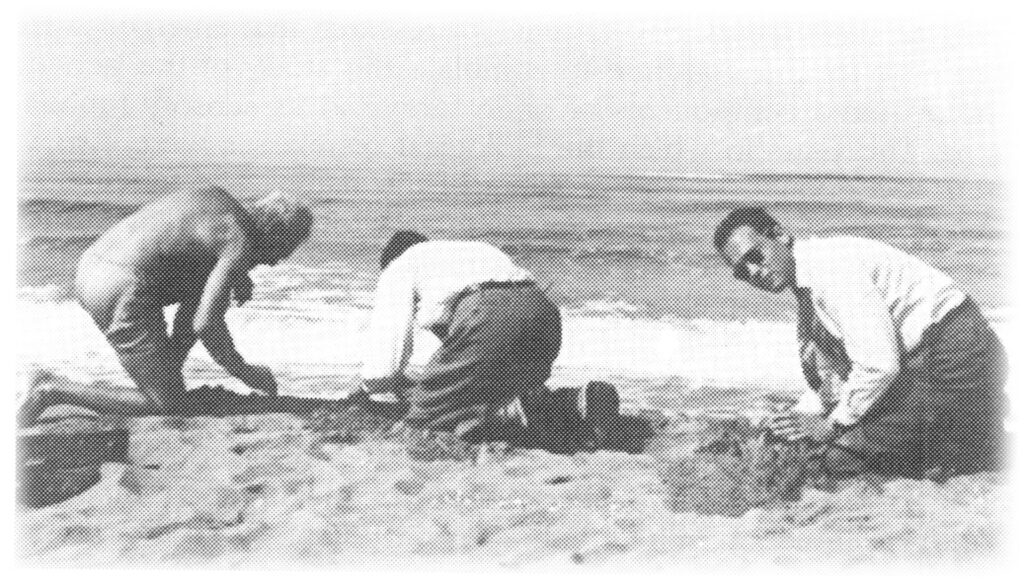
Despite these intrinsic difficulties to the different wandering of the moon in the sky, the experimental evidence collected by the two researchers convinced even the most skeptical, and the existence of a “chronometric” lunar compass, linked to the temporality of its cycle, is thus demonstrated for the first time. Its precision is similar to that of the solar compass (Fig. 3) and allows one to calculate the direction of return to the sea at any time of the night. Obviously when it is visible. Subsequent research, and later that of their students, discovers the same mechanism in other seashore crustaceans, and insects and spiders on the beaches. Not only that: it was precisely that research that gave rise to the ethological school that developed from there in the universities of Pisa and Florence.
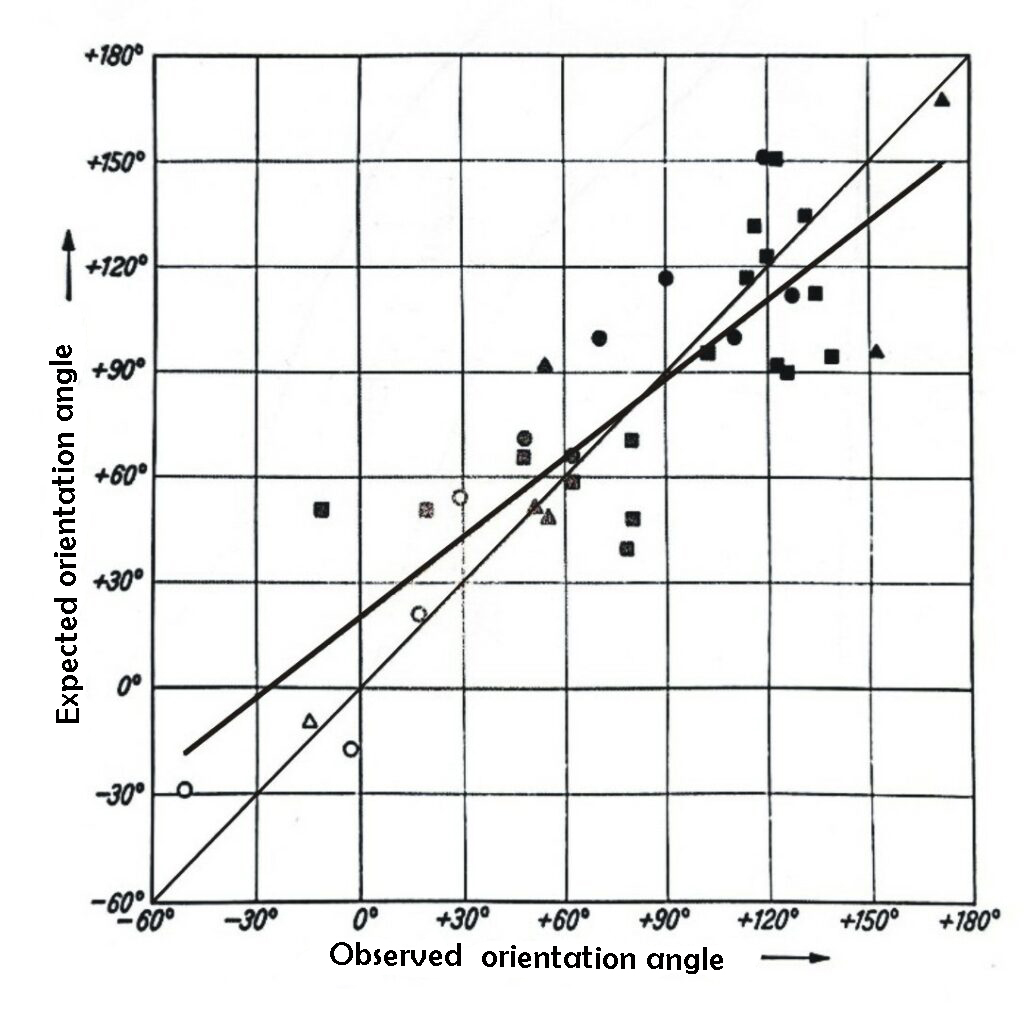
The rare use of the lunar compass
In evolutionary terms, the few examples of lunar compass use could suggest some difficulty in its evolution in other animal groups. However, this appears arguable and the rarity of this mechanism could reflect both ecological reasons, linked to particular environments such as the beach, and the lack of attention paid to it by ethologists. The moon, not always present, cannot be a primary orientation source; however, it can support other compasses, being very conspicuous in the sky so much to partially obscure the stars. Its non-repetitive movements like those of the sun, could make it difficult to read although it would not be impossible for birds to observe them in the first months of life and learn them, as happens with the sun’s motion.
The fact is that after the discovery of Pardi and Papi on organisms on the beaches, the only example of a lunar compass (a fact not completely agreed upon) is related to the mallard (Anas platyrhynchos). Even a nocturnal butterfly, the pollinating moth (Noctua pronuba), could use the moon for its orientation, moving at a fixed angle with its position. Therefore not using it as a compass, but in a so-called “photomenotactic” way, a form of taxis.1.
Image 4 shows the results of an experiment I conducted on the mon influence on the orientation of the chiffchaff (Phylloscopus collybita), a long-distance migratory passerine bird, during its spring flight from Africa to Europe. The chiffchaffs tested on moonless nights were correctly oriented toward the north, as expected in Spring; those tested on full moon nights were equally so but with an even better orientation (due to the greater mean vector length). When the moon was hidden with a screen and its image collected on a mirror that showed it as deviated by 180°, the orientation of the chiffchaffs changed drastically by the same angle. The chiffchaffs oriented their directional preferences toward the image reflected in the mirror, rather than toward the north, even though they had both the stars and the magnetic stimuli available. This can be interpreted as simple taxis and not as an example of a compass stimulus, but it certainly speaks in favour of the moon as an orienting stimulus for a long-distance migrant.
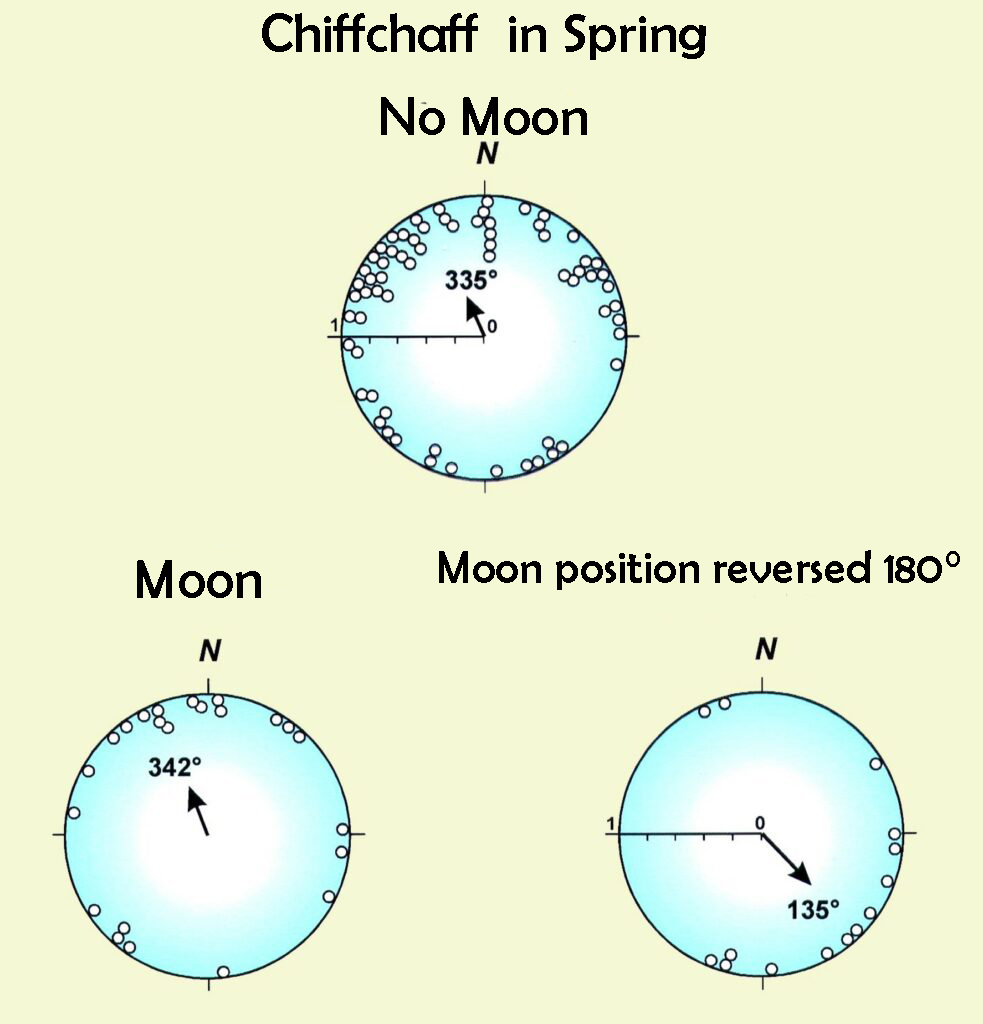
Orienting stimulus or fatal trap
Every year large numbers of migratory birds (more than a million in the USA alone) are attracted and killed by structures that, like navigation lights, have a strong light at their top. This happens especially on moonless nights, with overcast skies or fog (Image 5). One wonders whether these massacres are because migrants try to orient themselves towards the artificial lights as if they were the moon, which is not present at that moment. If this were the case, collisions should occur: a) in greater numbers around the new moon phase, when it is not visible; b) during autumn migration when the direction of movement is towards the south, that is, towards the positions assumed in the sky by the moon.
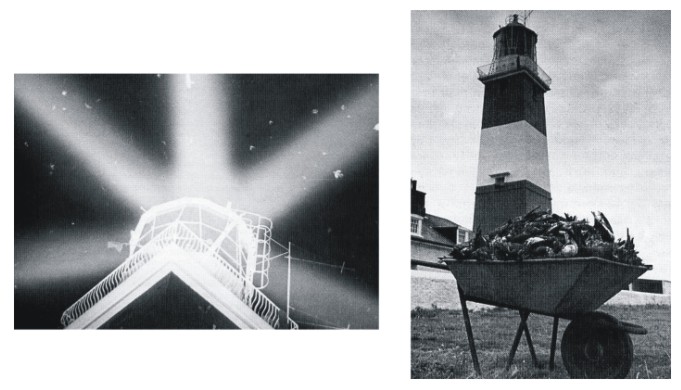
A Dutch ornithologist researched the collisions of migratory birds with lighthouse lights in connection with the lunar month phases. His results are quite convincing in demonstrating that the greatest number occur around the new moon phase and a minimum around the full moon phase as expected (Image 6). Likewise, the collision peaks result from autumn migration because it is quantitatively greater than spring migration with many young birds born two or three months earlier.
Since collisions with lighthouses and other light towers are real evidence of the fact that their light is mistaken for the moon, then this suggests that nocturnal migrants take the moon into account to guide their nocturnal flights, as indicated by the experiment with the chiffchaffs.
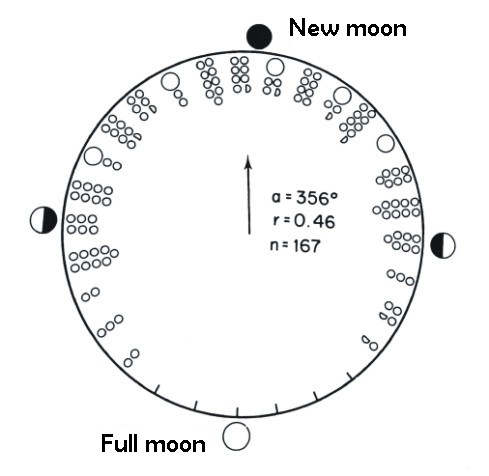
At the same time, this type of evidence is not a sure indication that the moon is used as a compass. In invertebrates, experimental evidence does not suggest a direct orientation towards the moon (i.e. taxis), but rather that it is the basis for determining, concerning its position, a given direction of movement that a subject must take, as exemplified in image three. A talitrus that must return to its elective habitat at night, located supposedly in the west, will choose that direction based on the position of the moon and on the fact that it has followed the evolution of its movement through its endogenous sense of time. This allows it to understand the direction of the star at that moment, thus identifying the west.
The conclusion that can be drawn today is simple: valid experimental evidence of the existence of a lunar compass is still related to a small group of invertebrate species. Everything that refers to other zoological groups has not been fully investigated yet. In some animal species, the moon decreases activity, perhaps for anti-predatory reasons. It increases it in species like birds, especially in caged birds. However, many researchers believe that reactions to the moon are only phototaxic in front of a strong light source, denying any implication in migratory orientation or homing behaviors… but then tell me – please – why should a tiny crustacean be able to do better than birds that have evolved to reach the highest form of movement…?
- Tassia = orientamento diretto verso una fonte stimolante. ↩︎
Credits
Author: N. Emilio Baldaccini. Former Professor of Ethology and Conservation of Zoocenotic resources at University of Pisa. Author of over 300 scientific papers in national and international journals. He is active in the field of scientific education, and co-author of academic textbooks of Ethology, General and Systematic Zoology, Comparative Anatomy.
Translation by Maria Antonietta Sessa


